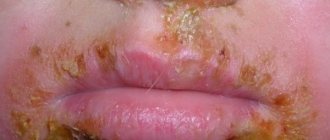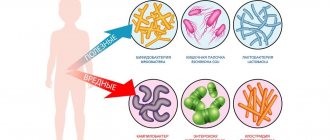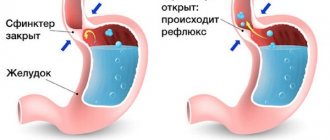Streptococcal infection has for many times remained one of the most numerous and widespread in healthcare. Streptococci affect the oral cavity and respiratory tract, skin and internal organs. They cause sepsis and severe toxicosis.
Streptococci pose a great danger to pregnant women and children. With tonsillitis, streptococcal throat infection can cause an autoimmune response, leading to serious complications of internal organs (rheumatic damage to the heart muscle, joints, kidneys). Streptococcal infection often takes on a protracted, chronic course. Its prevention is of great medical and social importance.
Streptococcal throat infection: sore throats and pharyngitis
Sore throat is an acute infectious disease of the body that occurs with symptoms of acute inflammation of the structures of the pharyngeal lymphoid ring. There are several types of the disease, among which purulent tonsillitis is considered especially dangerous. Anginas are divided into catarrhal, lacunar, follicular, fibrinous, ulcerative-necrotic tonsillitis and phlegmonous. Their symptoms vary from each other. Sore throat is one of the most common diseases after influenza and acute respiratory infections.
Children get sick more often. Most adults become ill before the age of 40. The seasonal nature of the disease is noted. The infection is transmitted by airborne droplets and through household items. The cause of sore throats can be an infection that is localized in the maxillary sinuses, in areas of dental caries, and gums. In chronic tonsillitis, autoinfection often occurs (self-infection from local foci of infection). The state of the human immune system is of primary importance in the development of the disease.
Rice. 1. The photo shows acute catarrhal tonsillitis. “Red throat” - hyperemia of the area of the lateral ridges and larynx. Swelling, pain, redness and enlarged lymph nodes are the main symptoms of streptococcal sore throat.
Rice. 2. The photo shows a purulent sore throat. Streptococcal infection is the main cause of the disease.
Rice. 3. The photo shows chronic tonsillitis. The tonsil on the left is significantly increased in size. Pus and purulent plugs in the lacunae are visible.
Up to 70% of tonsillitis cases are caused by viruses. Among them, the most common are coronavirus and rhinoviruses. The remaining 30% comes from bacteria, fungi and other microorganisms. Up to 80% of cases of sore throats caused by bacteria are caused by group A β-hemolytic streptococci (Streptococcus pyogenes, GABHS).
To timely prescribe an antibiotic for angina, it is necessary to identify antigens to GABHS using the Streptatest system.
Streptotest is a universal tool that allows you to determine the cause of a sore throat in 5 minutes. It will quickly establish the presence of group A β-hemolytic streptococcus in the oral cavity, which means it will help to promptly prescribe adequate antimicrobial therapy. In the absence of a pathogen, streptotest will allow you to avoid unnecessary treatment of sore throat with antibiotics. Streptotest has high (about 90%) specificity and high (about 95%) sensitivity.
Rice. 4. Streptatest has high (about 90%) specificity and high (about 95%) sensitivity. Allows you to determine the cause of a sore throat in 5 minutes.
Streptococcal tonsillitis is complicated by purulent otitis media, sinusitis, peritonsillar abscess, mastoiditis, meningitis, and pneumonia.
Streptococcal infection can cause an autoimmune response, which leads to serious complications of internal organs:
- rheumatic damage to the heart muscle;
- joint damage (arthritis);
- kidney damage (glomerulo- and pyelonephritis).
When microbes enter the bloodstream and massively multiply, sepsis and meningitis can occur.
Treatment of sore throat is carried out with antibiotics of the following groups:
- Penicillin group drugs (Phenoxymethylpenicillin, Augmentin, Amoxiclav, Amoxicillin).
- Macrolides (Sumamed, Azithromycin).
- Cephalosporins (Cefatoxime, Cefuroxime).
The number of early streptococcal complications has now significantly decreased and is almost equal to the frequency of late B-streptococcal infection in newborns. This is due to the effective prevention of morbidity with antibiotics before and during childbirth.
What diseases are possible?
During the first week of a child's life, the most serious complication may be a generalized infection - sepsis. It can occur against the background of B-strepococcus caused by pneumonia and meningitis, and milder lesions - pyoderma, folliculitis, abscesses. In the later period, streptococcal meningitis and pneumonia are also possible, and sepsis develops less frequently. Meningitis is more common in the late period of diseases caused by group B streptococcus.
Long-term consequences are possible for early and late-onset streptococcal diseases, especially for infants with meningitis. Hearing impairment and deviations in mental and physical development are possible. Currently, in developed countries, death from infection caused by B-streptococci occurs in 4-6% of all patients.
In pregnant women, group B streptococcus can cause miscarriage, stillbirth and premature birth. In nursing mothers, B-hemolytic streptococcus from a baby can cause lactostasis and mastitis.
Symptoms of streptococcal infection
Most of the symptoms are characteristic of any infectious process. With early onset, symptoms of streptococcal infection appear immediately after birth. When onset after the first week of life, the baby is born healthy, but symptoms develop later.
Some symptoms: fever, feeding problems, irritability or drowsiness, lethargy, lethargy, difficulty breathing, pale, bluish skin color, pinpoint rash.
Diagnosis of group B-streptococcus diseases in newborns
Group B hemolytic streptococcus is diagnosed by drawing blood or cerebrospinal fluid for sterility. The resulting material is inoculated onto nutrient media and after a few days, colonies of bacteria grow, if they are present in the baby’s body. In cases where streptococcus was detected in pregnant women and they received antibacterial therapy, the child after birth requires dynamic monitoring, even if it looks healthy. In both cases, both with early onset of the disease and with late onset, if there is a suspicion of streptococcal infection, it should be confirmed by diagnostic tests and the sensitivity of bacteria to antibiotics should be determined. In milder forms of the disease - local abscesses - the culture is taken directly from the element.
Treatment of newborns.
Streptococcal infections in newborns and older children are treated with antibiotics (such as penicillin or ampicillin) given through a vein. In severe cases, a complex of measures of intensive symptomatic therapy is carried out.
Transmission of infection.
When the disease begins early, streptococcal bacteria are transmitted from mother to child, most often during childbirth. Antibiotics given to the mother during childbirth reduce the risk of this transmission.
When the disease begins after a week of life, the bacteria could also be obtained from the mother or from another source. If the child's mother is not a carrier of streptococcus, it is not always possible to determine the source of infection. For a child whose mother does not test positive for group B streptococcus, the source of infection for late-onset disease may be difficult to understand and often unknown. Breastfeeding is considered safe for the baby if the mother has group B streptococcus. On the contrary, feeding with mother's milk only has a beneficial effect for the baby.
Risk factors
Factors that increase the risk include: A positive test result for group B streptococcus at the end of the current pregnancy (35-37 weeks of pregnancy), detection of streptococcus in the pregnant woman's urine during the current pregnancy, prematurity (before 37 weeks of pregnancy), signs of illness in the mother (fever and etc.), a long period between the rupture of membranes and childbirth, previous births with the development of early streptococcal complications.
Risks of late onset of infectious streptococcal complications: prematurity, developmental delay due to other reasons (for example, CMV), lack of breastfeeding, poor child care conditions.
Streptococcal infection is the cause of rheumatism
The cause of the development of the disease is beta hemolytic streptococci of group A. They are capable of producing enzymes that have a cardiotoxic effect, and some strains of them are capable of causing an autoimmune response, which leads to the development of systemic inflammation of the connective tissue in the body of a patient with damage:
- membranes of the heart (rheumomyocarditis, rheumatic carditis),
- joints (rheumopolyarthritis),
- small cerebral vessels (rheumorrhea),
- skin (ring-shaped and nodular erythema, rheumatic nodules),
- pleura (rheumopleuritis), liver (rheumatic hepatitis),
- kidneys (rheumatic nephritis).
The disease is most often registered in children 5 - 15 years old.
Rice. 5. Heart damage due to rheumatism. The cause of the disease is streptococcal infection.
Rice. 6. Consequences of rheumatism suffered in childhood.
What is the prognosis for group B streptococcus infection?
The prognosis for group B streptococcal infection varies depending on various factors, including the patient's age and the presence of any other diseases. Pregnant women who develop symptoms of group B streptococcal infection also have a low mortality rate because they are generally healthy. Non-pregnant adults who develop invasive GBS infection tend to have a higher mortality rate, ranging from 5% to 47% depending on the study, since this group of patients tend to be older and they often have serious underlying diseases.
Streptococci - the cause of erysipelas
Erysipelas (translated from French as red) is an infectious skin disease caused by group A beta hemolytic streptococcus (GABHS). With erysipelas, a limited area of the skin and tissue is affected.
Streptococcal infection penetrates through wounds and abrasions, diaper rash and cracks, psoriatic, herpetic and other skin lesions. The pathogen multiplies in the lymphatic skin capillaries. Toxins of the pathogen cause serous, often serous-purulent inflammation, which is complicated by the destruction (necrosis) of soft tissues. Autoimmune complexes contribute to the development of hemorrhagic syndrome, as evidenced by the appearance of erythema (redness), swelling and blisters with serous-hemorrhagic contents.
With erysipelas, the lower extremities are more often affected, and less often the upper extremities. The skin of the face is even less commonly affected.
The disease develops quickly, rapidly, with pronounced symptoms of intoxication. Pain, redness and swelling are the main symptoms of erysipelas.
In case of classic erysipelas, microbiological examination is not carried out. Antibiotics of the penicillin group are the drugs of choice in the treatment of the disease.
Rice. 7. The photo shows erysipelas in a child.
Rice. 8. The photo shows a mug. The cause is streptococcal infection. A hyperemic, raised lesion is visible on the skin of the face. Its surface is shiny and tense.
Rice. 9. The photo shows a mug. Phlegmonous-necrotic form of the disease.
Rice. 10. The photo shows erysipelas (phlegmonous-necrotic form). Streptococci are the culprits of the disease.
Rice. 11. The photo shows erysipelas (gangrenous form of the disease). The culprit of the disease is streptococcus.
Can Group B Strep infection be prevented?
Currently, the best measure to prevent group B streptococcus infection is regular screening during pregnancy. This testing has reduced the overall number of early onset cases of GBS in newborns by approximately 80% since aggressive preventive measures were introduced in the 1990s. Screening for group B streptococcal colonization is strongly recommended in pregnant women. This screening test is performed between 35-37 weeks of pregnancy. The test involves using a sterile swab to collect a sample from both the vaginal and rectal areas, with results usually available within 24 to 72 hours.
Antibiotics during labor for pregnant women colonized with GBS and for those with the risk factors described above may help prevent transmission of group B streptococcal infection and thus reduce the incidence of early onset group B streptococcal disease in neonates.
Although there is currently no licensed vaccine to prevent GBS infection, research is being conducted to try to develop one for future use.
Streptococcal impetigo
Streptococcal impetigo is the most common manifestation of streptoderma. Streptococcal impetigo is characterized by the appearance of phlyctenas - pustules (vesicles with purulent contents) in the superficial or deep layers of the skin, not associated with the hair follicle. Pustules located in the deep layers of the skin leave scars after healing. Superficial - heal without leaving a trace.
The disease has many varieties
- Bullous impetigo is most often recorded on the legs, hands and feet. The conflicts are larger in size. After opening them, you can see the remains of the walls of the bubble along the edges.
- Streptococcal diaper rash is recorded in the folds of the skin - inguinal, axillary, behind the ear and intergluteal.
- Streptococcal infection (cheilitis) - in the corners of the mouth.
- Streptococcal ecthyma (pustules are located in the deep layers of the skin) - most often localized on the skin of the buttocks.
- Tourniole - around the nail plates.
Streptococci are the cause of inflammation of the follicles (hair follicles)
Furuncle
Streptococci and staphylococci cause acute purulent-necrotic inflammation of the follicle (hair follicle), sebaceous gland and surrounding tissue, which is called a boil. All kinds of skin injuries, increased sweating, vitamin deficiencies and decreased immunity contribute to the disease.
A boil occurs in the area of skin where hair grows - the back of the head, back, buttocks, groin and armpits. By the end of the first week, the inflammatory infiltrate takes on a cone-shaped shape. At its top there is a yellowish-greenish head. After the purulent masses break through, the defect is closed with a scar. The boil can be complicated by an abscess, phlegmon, sepsis and purulent meningitis. The development of multiple boils is called furunculosis, which most often develops in people with weakened immune systems.
Rice. 23. The photo shows a boil of the nose. The cause of the disease is streptococcal infection.
Rice. 24. The photo shows a boil of the thigh.
Rice. 25. The photo shows a boil. The culprit of the disease is streptococcus.
Carbuncle
Inflammation of several adjacent follicles is called a carbuncle. Carbuncle can be complicated by purulent lymphadenitis, purulent thrombophlebitis, erysipelas, phlegmon and sepsis. Carbuncle of the nose and lip is dangerous for the development of purulent meningitis.
Rice. 26. The photo shows a carbuncle of the skin of the back.
Rice. 27. The photo shows a carbuncle of the neck. The cause is streptococci.
Phlegmon - purulent inflammation of the tissue
With purulent inflammation of the fiber, a large amount of which is located under the skin, in the intermuscular and retroperitoneal space or the walls of hollow organs (appendix, stomach, gall bladder, intestines, etc.), phlegmon develops.
With purulent inflammation of the periungual tissue, paronychia develops, and felon develops in the subcutaneous tissue of the fingers. Panaritium can be complicated by tendovaginitis, osteomyelitis, phlegmon of the hand, lymphadenitis and sepsis.
When the infection spreads to the tissue of the neck from almonds affected by pyogenic bacteria or inflammatory foci of the maxillofacial system, phlegmon of the neck develops. With phlegmon of the neck, streptococcal infection can spread to the pericardium, pleura and mediastinal tissue. When bacteria enter the blood, sepsis develops.
With the development of acute purulent inflammation in the mediastinal tissue, mediastinitis develops, in the perinephric tissue - paranephritis, in the peri-uterine tissue - parametritis, in the tissue around the rectum - paraproctitis. Intoxication, fistulas, peritonitis and sepsis are the most dangerous complications of phlegmon.
Rice. 28. The photo shows a combination of phlegmonous and fibrous tonsillitis. The transition of the inflammatory process from lymphoid tissue to peri-almond tissue is visible.
Rice. 29. The photo shows paronychia. The disease is often caused by streptococci.
Rice. 30. In the photo there is a panaritium.
Abscess - a complication of streptococcal sore throat
An abscess is formed when acute purulent inflammation develops, followed by melting of the tissue and the formation of a cavity filled with pus. Abscesses can occur in a variety of tissues and organs, but the medically significant abscesses are those that appear in the brain, lungs, and liver. Their sources are purulent otitis, sinusitis, pneumonia, boils and carbuncles of the face.
Rice. 31. Peritonsillar abscess is one of the early purulent complications of tonsillitis. In the figure we see a spherical formation that displaces the palatine arches and the soft palate in the opposite direction.
Rice. 32. The photo shows flux (tooth abscess). A common cause is streptococci.
Rice. 33. The photo shows an abscess of the upper eyelid.
Rice. 34. The photo shows an abscess in the lungs. The horizontal level of liquid in the cavity is visible.
Streptococcal infection in infants
Infection of a newborn occurs during childbirth, when the fetus passes through the infected paths of the mother and during pregnancy (in utero). The source of infection is group B streptococci (S. agalactiae). The infection may appear immediately or several weeks after birth. In newborns, the disease often occurs in the form of bacteremia, pneumonia, meningitis and sepsis.
Streptoderma in infants
With streptoderma, the surface layer of the skin is affected. Vesicles (bubbles) containing clear liquid appear on the skin, which quickly becomes purulent. After a few days the bubbles burst. The affected area of skin becomes crusty. Due to the itching that accompanies the disease, the child behaves restlessly and sleeps poorly. Scars form at the sites of damage.
Rice. 35. The photo shows streptoderma in an infant.
Rice. 36. The photo shows streptococcal diaper rash.
Vulgar ecthyma in infants
With vulgar ecthyma, the deeper layers of the skin are affected. Vesicles (bubbles) containing clear liquid appear on the skin, which quickly becomes purulent. After a few days the bubbles burst. The affected area of the skin becomes covered with a yellow crust, under which there is a painful ulcer. The disease occurs with elevated temperature. The child becomes lethargic and drowsy. In a complicated course, inflammation of the lymphatic vessels and lymph nodes develops.
Sepsis in infants
In sepsis, streptococci circulate in the blood and affect numerous organs of the child with the development of purulent inflammation. The disease is difficult. In 5–20% of cases, the disease in children ends in death.
Rice. 37. The photo shows sepsis in an infant.
Meningitis in infants
Purulent inflammation of the meninges in children is severe. Body temperature rises significantly. The child is lethargic or agitated. A severe headache appears. Toxic damage to small vessels is manifested by a rash on the body. There is rapid weight loss. Toxic shock may develop. The mortality rate is 10-15%. Subsequently, mental retardation may occur.
Rice. 38. The photo shows a rash due to meningitis.
Pneumonia in infants
Streptococcal pneumonia in children is severe. Due to inflammation of the lung tissue, gas exchange is disrupted and the child’s body begins to suffer from oxygen deficiency. Complications: toxic shock.
How do people get group B streptococcus?
In newborns, group B streptococcal infection is acquired through direct contact with bacteria in the uterus or during birth; thus, a gestational bacterial infection is transmitted from a colonized mother to her newborn. Approximately 50% of colonized mothers will pass the bacteria to their infants during pregnancy and vaginal birth. However, not all babies will be affected by the bacteria, and statistics show that about one in 200 babies born to a mother infected with group B streptococcus will actually develop a GBS infection.
Group B streptococcal infection is more common in African Americans than in whites. There are also risk factors for the mother that increase the likelihood of transmitting group B streptococcus to the newborn, leading to early onset of the disease:
- Membrane rupture before 37 weeks of pregnancy;
- Membrane rupture more than 18 hours before birth;
- Urinary tract infection with group B streptococci during pregnancy;
- Previous child with GBS infection;
- Fever during childbirth;
- Positive culture of group B streptococci at 35-37 weeks of pregnancy.
Late-onset group B streptococcal disease is more common in infants who are born prematurely (What are the signs and symptoms of group B streptococcal infection?
In newborns with early GBS disease, signs and symptoms usually develop within the first 24 hours after birth. Those babies who develop late-onset GBS infection often appear healthy at birth, with signs and symptoms of the disease developing after the first week of life. Signs and symptoms that may occur with group B streptococcal infection in infants include:
- Increased body temperature;
- breathing problems/grumbling sounds;
- Bluish skin (cyanosis);
- Convulsions;
- Fragility or rigidity;
- Abnormalities of heart rhythm (arrhythmia) and blood pressure;
- Poor nutrition;
- Vomit;
- Diarrhea;
- Fussiness.
Adults who develop invasive group B streptococcus infection may develop:
- Blood infections (sepsis);
- Skin and soft tissue infections;
- Infection of bones and joints;
- Pulmonary infection (pneumonia);
- Urinary tract infections;
- Rarely, infection of the fluid and lining tissues surrounding the brain (meningitis).
The exact source of group B streptococcal infection in nonpregnant adults is often not determined.











